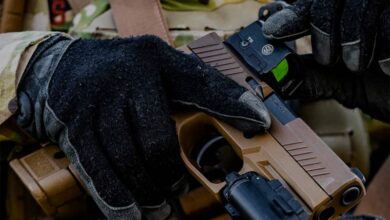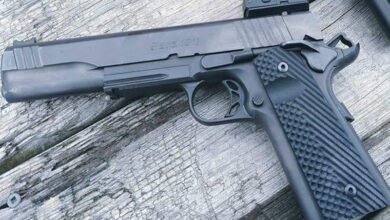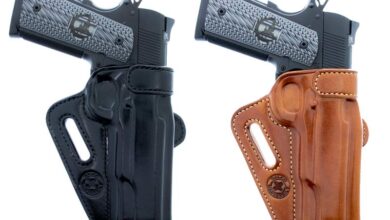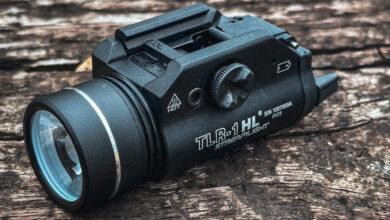Are Full-Sized Pistols All Washed Up?
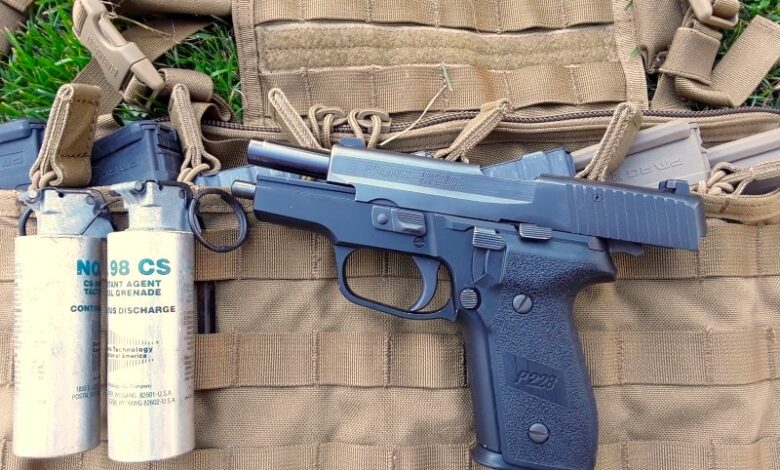
Why would anyone carry a full-sized pistol these days when we have micro-sized pistols that carry nearly as many rounds? And who can deal with all of that extra weight that those huge pistols bring to the table?
Perhaps this bears looking at.
Duty-Sized Pistols
In the glorious 1980s (when we should all still be living), we saw an exciting development in handgun evolution. Pistols such as the Sig P226, the Glock 17, and the Beretta 92 came on the scene.
Well, to be truly fair, we have to rewind to the 1970s because Sig Sauer introduced the P220 in .45 ACP in 1975, which was the predecessor to the P226, P228, and the rest of the Sig lineage. Also from that era, Smith & Wesson’s 5900 series of autos was unveiled, which gradually led to improvements and developments in their pistols.
The major trend at the time was law enforcement’s migration from predominately revolvers over to auto pistols. As soon as this trend became obvious, the race was on to give law enforcement agencies and the military what they yearned for. And, of course, the civilian market also took to autos like ticks jumping onto a dog.
I’m just hitting the highlights here, as the intent of this writing isn’t to explore the minutiae of every duty-sized pistol on the market.
Not too long after these full-sized pistols came on the scene, compact versions were introduced. We’re talking about the Sig P228, Glock 19, and the like. Interestingly, although those were once considered to be “compacts,” uniformed personnel often use them for duty carry now.
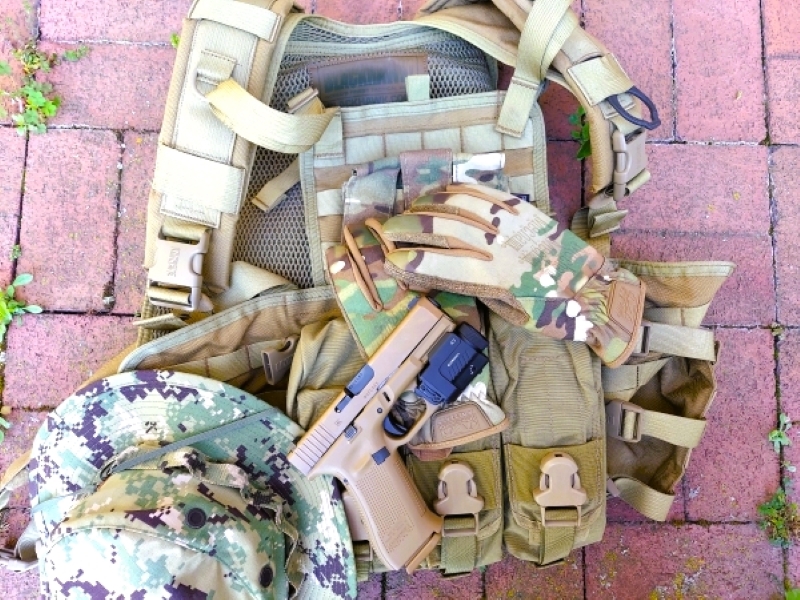
Consider that the Glock 19X was entered into military trials to be the military’s next service pistol, though Sig’s M17 won the trials. These are both full-sized pistols because that’s what the military needs for its uniformed personnel.
Another major trend worth noting is the migration back to 9mm from .40 S&W for a couple of reasons. 9mm offers less cost, less recoil, and less pressure to beat up guns.
But I digress. What are some of the good and bad points about full-sized, duty pistols?
Advantages
For those with large hands, they can be the way to go, as they give a solid purchase for those whose hands resemble bear paws. In the same vein, those large grips distribute recoil over a larger area, which can make the larger pistols more controllable.
Another factor in the controllability department is the extra weight of these pistols. This, too, soaks up recoil and helps to make those follow-up shots faster and easier.
A longer sight radius, which they bring to the table, is another vote toward great accuracy. Capacity with these pistols is also very good, with lots of real estate in the grip to house bullets.
Disadvantages
Full-size pistols are heavier and can be a real pain to lug around all day (or even for a short time). This is especially true for those of us who are getting up in years. For example, a Sig P226 weighs 34 ounces with an empty magazine inserted. A Glock 17 weighs 22 ounces, which is lighter but still heavier than today’s micro-9mm pistols.
The Sig P226 pictured in this article belongs to a good friend. He carries it daily in a shoulder holster, which takes the weight off the waist and distributes it over a larger area. The size of duty pistols makes them more difficult to conceal when compared to much smaller handguns.
Micro-Sized Pistols
There are a bunch of micro-pistols popular today: the Glock 43, Springfield Hellcat, Sig P365, FN Reflex, and several more. Most fall within a few ounces and fractions of an inch of each other. Most hold a similar number of rounds. In short, they’re all extremely similar, with small nuances setting them apart.
Advantages
Due to their much smaller size, micro-pistols are appreciably easier to conceal. For civilian carriers or off-duty/undercover law enforcement, that’s a big deal. The smaller footprint of these little pistols makes a difference.
Naturally, the lighter weight is also a boon. How much less? Well, a Sig P365 weighs 17.8 ounces. That’s right around half what the Sig P226 weighs.

If you don’t put much stock in how much weight is relevant, consider that a huge percentage of injuries to police officers occur in the lower back region. Why? Because of all the gear they carry on their belt: A handgun, Taser, handcuffs, spare ammunition, medical kit, latex gloves, OC spray, a radio, and a crapload of other crapola. All that weight eventually blows out the lower back muscles.
For some people, the smaller circumference of the micro-compacts’ grip is a better fit for the hand.
Disadvantages
Some might think that having the tiniest pistol possible would be the ultimate goal, but that’s not always the case. There’s a reason why uniformed police don’t carry a Sig P365 as their duty weapon. First, grabbing it from a holster would be difficult because of the small grip (and it’s not just the P365; I’m just using that as one example); there’s just not much mass to grab onto in an emergency. And let’s face it, if you’re grabbing your duty weapon in a hurry, there is an emergency. Now, let’s say you’re wearing gloves while quickly trying to access this pistol; that small grip will be even more difficult to grasp in a hurry.
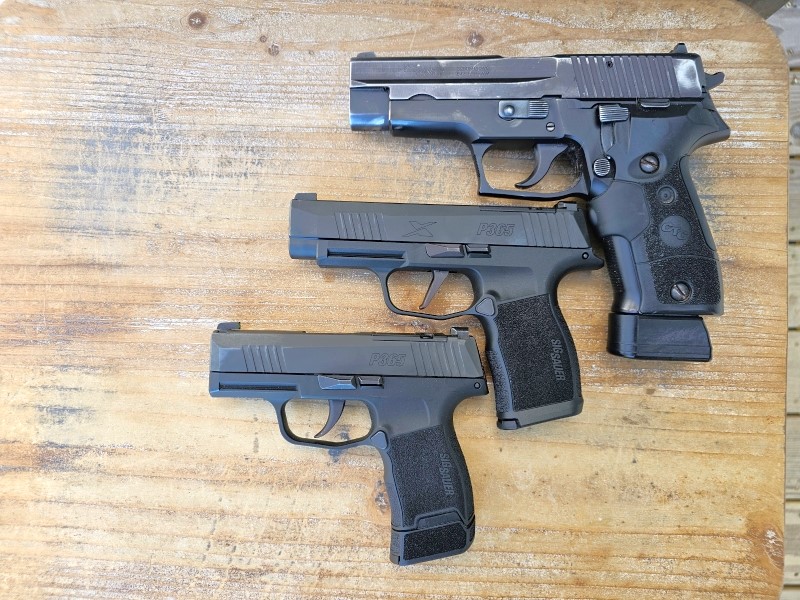
Won’t the same hold true for civilians who are carrying? Well, yes and no. In many cases, the pistol is carried IWB, or closer to the person’s body, than in the case of a duty holster, which makes the grip easier to access. Another huge factor is that I’m not aware of any company that makes duty holsters for micro-9mm pistols, much less duty holsters that offer levels of retention for them. That’s just not a thing because no one wants or needs it.
The short sight radius of micro-pistols isn’t conducive to duty use either, in that it’s more difficult to shoot them accurately. This is not to say that these pistols aren’t accurate, but to march forth and fight crime, a larger pistol will offer an easier time when trying to shoot it accurately.

By the same token, the larger pistols offer less recoil and can be fired faster than the tiny pistols, and when that is combined with accuracy, it just cannot be beaten.
Finally, micro-pistols normally don’t quite have as much capacity as their larger brethren. As a uniformed officer, having a few more rounds on tap certainly doesn’t hurt.
Final Thoughts
So, with all of these micro-pistols available, are full-sized pistols all washed up? Hardly!
Those who need a pistol for duty need full-sized (or at least, the compact version) pistols. Whether it’s the cop on the beat, a SWAT officer, or those in the military, they need a full-sized pistol to tackle full-sized tasks. Larger grips hold more rounds, which is important on the battlefield, whether that happens to be military or law enforcement. A full sight radius and longer barrel both contribute to better accuracy and longer range effectiveness. The larger frame and heavier weight cut down on recoil, so they can be fired faster and controlled better than tiny pistols.
All told, the advantages of the large pistol still make a lot of sense in certain venues, just like the micro-pistols have their niche. It appears that neither one is going to drum out the other. We just have to select the right tool for the right job.
The post Are Full-Sized Pistols All Washed Up? appeared first on The Mag Life.
Read the full article here


